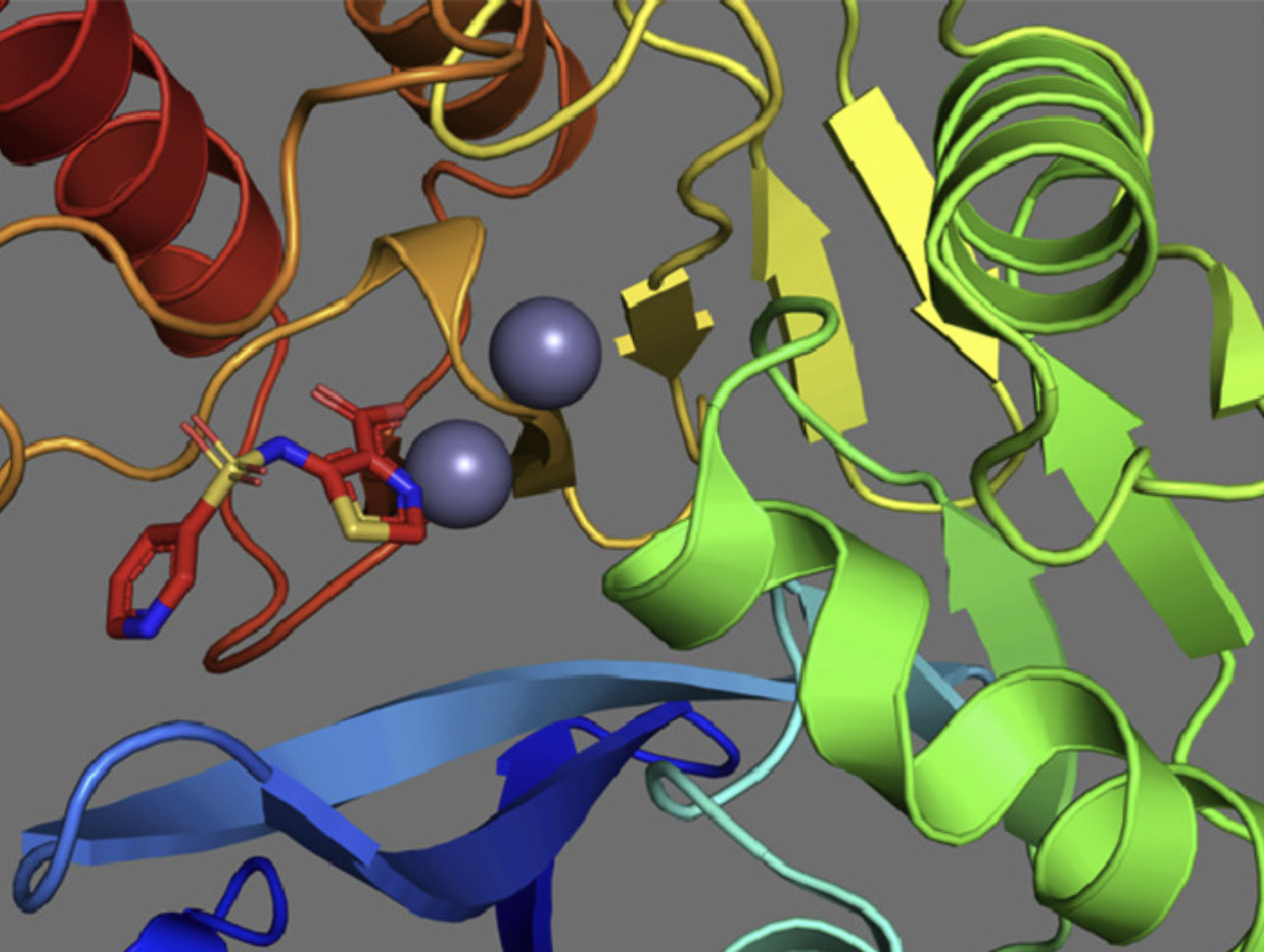
Miami researchers optimize new technique for evaluating potential drugs to fight antibiotic-resistant bacteria
By Joanna Urban, American Society for Microbiology, and Susan Meikle, university news and communications

Crystal structure of the metallo-beta-lactamase protein 5-(pyridine-3-sulfonamido)-1,3-thiazole-4-carboxylic acid (ANT-431) (image by Simon Leiris).
Researchers from the lab group of Michael Crowder, associate provost and dean of the Graduate School at Miami University, have optimized a new technique that will allow scientists to evaluate how potential inhibitors work on antibiotic-resistant bacteria. This technique, called native state mass spectrometry, provides a quick way for scientists to identify the best candidates for effective clinical drugs, particularly in cases where bacteria can no longer be treated with antibiotics alone.
They presented their research at the American Society for Microbiology World Microbe Forum online conference on June 21.
Doctoral candidate Caitlyn Thomas, the lead presenter, is also lead author of a 2020 publication about the research in “Probing the mechanisms of inhibition for various inhibitors of metallo-b-lactamases VIM-2 and NDM-1” in the Journal of Inorganic Biochemistry.
Crowder, professor of chemistry and biochemistry, researches antibiotic-resistant proteins called metallo-beta-lactamases (MBLs) — which can destroy penicillin and cephalosporin antibiotics. His lab group has been studying several metallo-beta-lactamases (MBLs) in an effort to design clinical inhibitors of these enzymes. He collaborates with Miami's Rick Page, associate professor of chemistry and biochemistry, Dave Tierney, professor of chemistry and biochemistry, and colleagues at the University of Texas-Austin, University of California-San Diego and Case Western University.
Read more in the American Society for Microbiology research news release “New technique allows for identification of potential drugs to fight resistant bacteria.”
